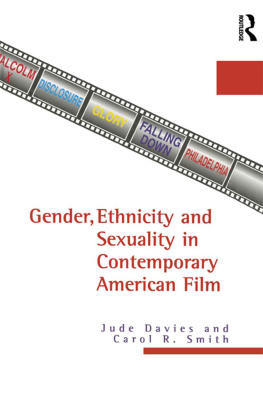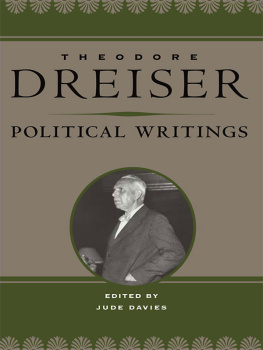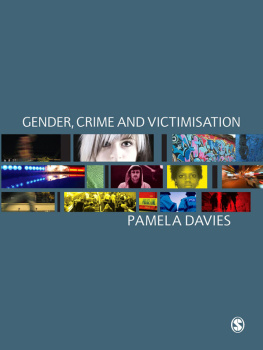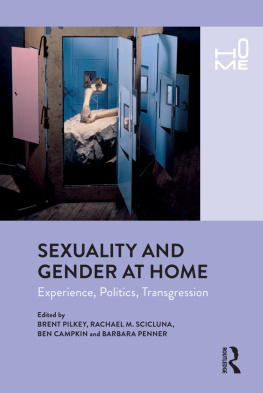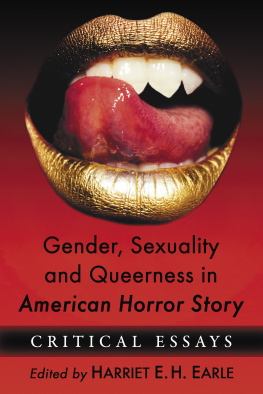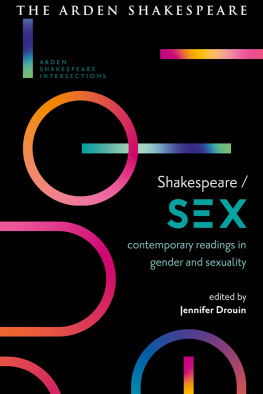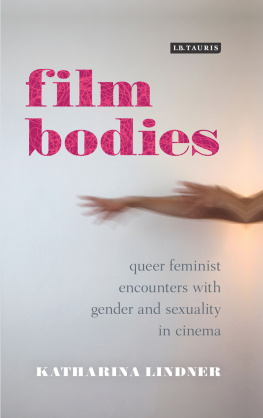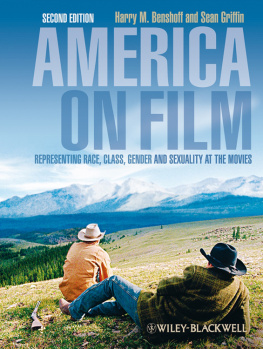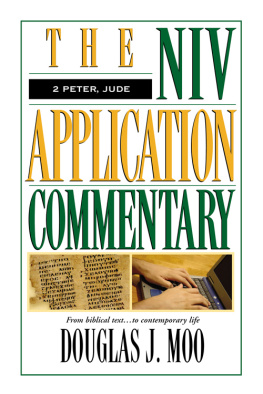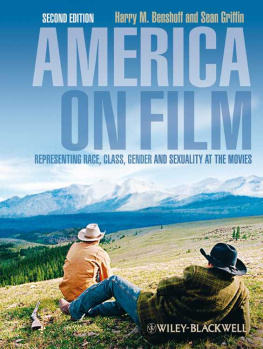Davies Jude - Gender, Ethnicity, and Sexuality in Contemporary American Film
Here you can read online Davies Jude - Gender, Ethnicity, and Sexuality in Contemporary American Film full text of the book (entire story) in english for free. Download pdf and epub, get meaning, cover and reviews about this ebook. publisher: Taylor & Francis Group, genre: Home and family. Description of the work, (preface) as well as reviews are available. Best literature library LitArk.com created for fans of good reading and offers a wide selection of genres:
Romance novel
Science fiction
Adventure
Detective
Science
History
Home and family
Prose
Art
Politics
Computer
Non-fiction
Religion
Business
Children
Humor
Choose a favorite category and find really read worthwhile books. Enjoy immersion in the world of imagination, feel the emotions of the characters or learn something new for yourself, make an fascinating discovery.
- Book:Gender, Ethnicity, and Sexuality in Contemporary American Film
- Author:
- Publisher:Taylor & Francis Group
- Genre:
- Rating:3 / 5
- Favourites:Add to favourites
- Your mark:
- 60
- 1
- 2
- 3
- 4
- 5
Gender, Ethnicity, and Sexuality in Contemporary American Film: summary, description and annotation
We offer to read an annotation, description, summary or preface (depends on what the author of the book "Gender, Ethnicity, and Sexuality in Contemporary American Film" wrote himself). If you haven't found the necessary information about the book — write in the comments, we will try to find it.
Gender, Ethnicity, and Sexuality in Contemporary American Film — read online for free the complete book (whole text) full work
Below is the text of the book, divided by pages. System saving the place of the last page read, allows you to conveniently read the book "Gender, Ethnicity, and Sexuality in Contemporary American Film" online for free, without having to search again every time where you left off. Put a bookmark, and you can go to the page where you finished reading at any time.
Font size:
Interval:
Bookmark:
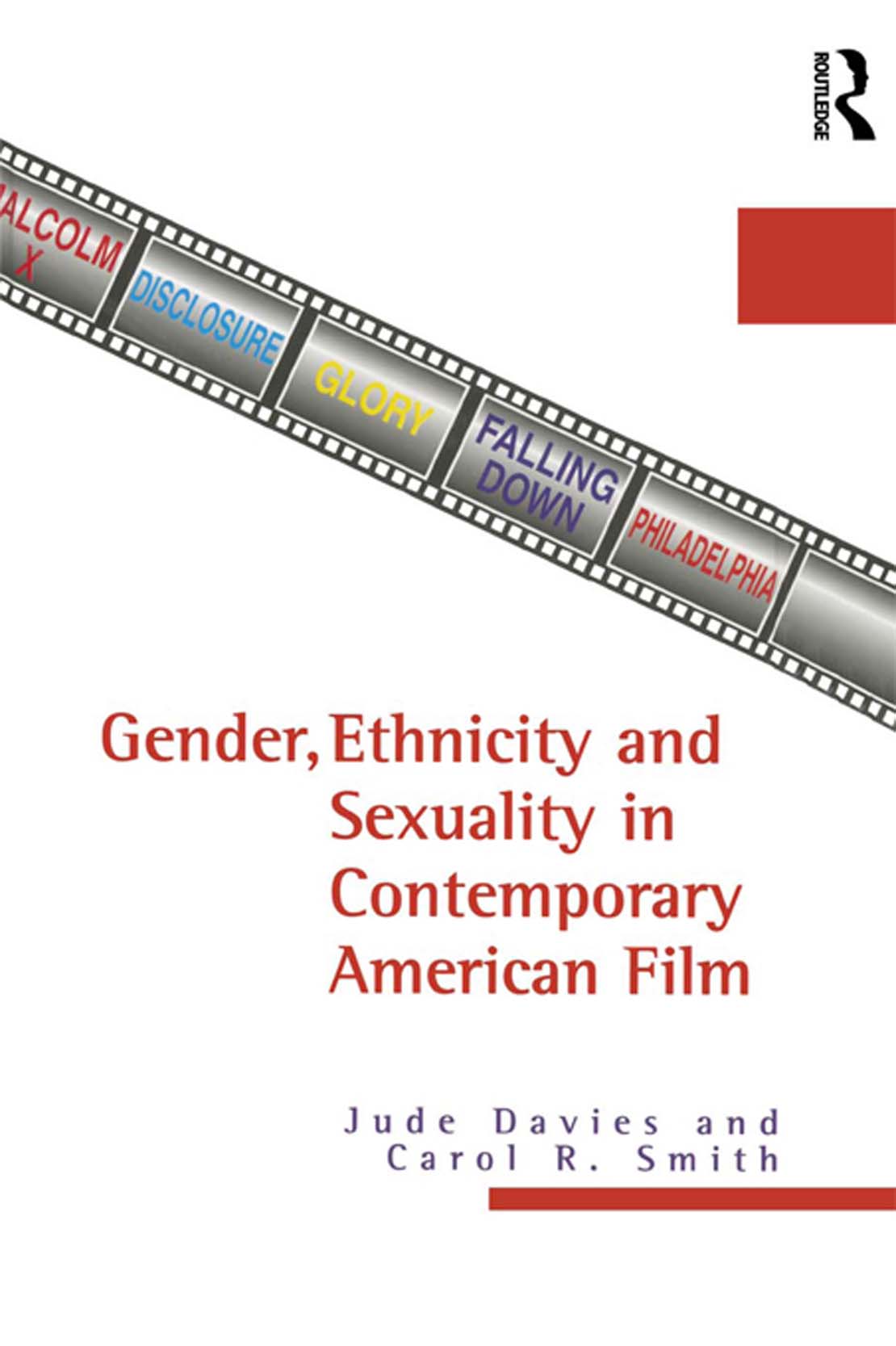
CONTEMPORARY AMERICAN FILM
Contemporary American Film
JUDE DAVIES AND CAROL R. SMITH

Jude Davies and Carol R. Smith, 1997
First published 2000 by Fitzroy Dearborn Publishers
This edition published 2013 by Routledge
711 Third Avenue, New York, NY 10017
2 Park Square, Milton Park, Abingdon, Oxfordshire OX14 4RN
Routledge is an imprint of the Taylor & Francis Group, an informa business
Typeset in Monotype Fournier by
Carnegie Publishing, Lancaster,
A Cataloging-in-Publication
record for this book is available
from the Library of Congress
ISBN 1-57958-227-3 Fitzroy Dearborn
All rights reserved, including the
right of reproduction in whole or in part in
any form
Dedication: For Our Parents
We would like to thank King Alfred's College of Higher Education for research grants which enabled the preparation of parts of this book.
We owe a debt of gratitude to our colleagues at King Alfred's College, especially those in the School of Cultural Studies and, in particular, Alasdair Spark, Head of American Studies. We would also like to thank the students who took our course on contemporary Hollywood on the American Studies programme in 1996.
Finally, many thanks to George McKay for helping to initiate the project and to Nicola Carr for helping to bring it to fruition.
[An] insistence on positive images... obscures the fact that nice images might at times be as pernicious as overtly degrading ones, providing a bourgeois facade for paternalism, a more pervasive racism.
Robert Stam and Louise Spence, Colonialism, Racism and
Representation
While the movement away from demeaning stereotypes into a larger field of cultural representation has the potential for counterhegemonic effects, mainstream cinema reveals, for the most part, a disturbing reliance on narrative structures that foreground the bourgeois ideal as symbol of racial egalitarianism. In this sense, such representations transform historical demands for civil rights into images of class homogeneity an ideological response to radical discourses of the 1960s that reiterates what Houston Baker calls, in another context, AMERICA as immanent idea of boundless, classless, raceless possibility.
Robyn Wiegman, Black bodies/American commodities: Gender,
race and the bourgeois ideal in contemporary film.
This book is not about the representation of various groups of Americans, defined in terms of gender, ethnicity and sexuality. Instead, we are concerned with the uses of cinematic images of identity. With reference to representations of identity and identity politics, the production and consumption of Hollywood movies have undergone substantial developments since the presidency of Ronald Reagan. In terms of production, this period has seen considerable penetration of non-white, non-straight, and non-male filmmakers into the Hollywood Although Lee and others have complained rightly that African American directors find it difficult to obtain blockbuster-level budgets, the early 1990s have seen films directed by African Americans and other non-whites distributed much more widely and in greater numbers than ever.
So far as representations of African Americans are concerned, 1990s films have presented racial identity in two major ways. Directors such as Matty Rich, John Singleton, Mario Van Peebles, Joseph Vasquez, Robert Townsend, Leslie Harris and others have told narratives of cultural and racial specificity in which blackness tends to be presented as constitutive of a social and cultural context. At the same time, performers such as Whoopi Goldberg, Denzel Washington, Danny Glover, Wesley Snipes and Eddie Murphy have played screen roles which, rather than being defined exclusively by essentialist constructions of ethnicity and gender, employ their cultural resonances in a variety of directions. The latter modes of representation are, in many respects, new developments, but what is perhaps still more striking is that both modes are produced side by side in many films, of which those of Spike Lee are some of the most prominent, though by no means the only, examples. Cinematic cultural space has been created in which African Americans and other non-white performers are presented in specific ethnic terms while also inhabiting centralised narrative and identificatory positions.
Crossovers into mainstream Hollywood by other traditionally marginal groups are apparent in the increasing number of women directors and in the increased visibility of multiple kinds of male homosexual identity and, to a lesser extent, lesbian identities on screen. Simultaneously, some of the more overtly patriarchal and white supremacist images of the Reagan era have become poor box office. Yet these various developments have not necessarily corresponded with economic equalisation, nor have they necessarily served to enhance the status of non-white, non-patriarchal, or non-straight cultural production. This book is aimed not at negating the importance of these developments, but at gaining a critical understanding of them.
While, as our opening quotations imply, the major focus of criticism in this field has been on representations of race and ethnicity perhaps because of the obviousness of the historical failure to translate visibility into cultural and economic status comparable issues are raised in regard to other modes of identity such as gender and sexuality. In all these fields, while increased visibility in what passes for the cultural mainstream has played a part in destabilising the former affiliations of identity politics, Hollywood films have also disseminated explicit discourses concerning identity, conceived in terms of race, ethnicity, gender, sexuality and generation. Contemporary viewers have become increasingly familiarised with discourses of identity that have developed in and around film, which mediate its production and consumption. The term talkies has been re-coined to describe films such as Falling Down (Joel Schumacher, 1993), Disclosure (Adrian Lyne, 1994) and Malcolm X (Spike Lee, 1992) which explicitly engage with debates around multiculturalism, gender and ethnicity as part of their marketing and, therefore, as part of their consumption. Such movies deliberately court controversy, or at least discussion, by engaging with politicised forms of identity, and their consumption is mediated by articles and cover stories in newspapers and magazines, by television entertainment news, and, if the story is big enough, on prime-time news. Not only talkies, but films as diverse as Pretty Woman (Garry Marshall, 1990), Ghost (Jerry Zucker, 1990), Forrest Gump (Robert Zemeckis, 1994), Philadelphia (Jonathan Demme, 1993) and Glory (Edward Zwick, 1989), all discussed in this book, make use of constructions of identity deriving from more or less politicised discourses in order to secure a variety of effects. It is a fair assumption then, that, to some extent at least, cinemagoers consume these films through the discourses of identity politics, focused more often than not on the filmic personae of certain performers.
An excellent critical response to developments in Hollywood in the late 1980s and 1990s is Tania Modleski's Feminism Without Women: Culture and Criticism in a Post-feminist Age
Font size:
Interval:
Bookmark:
Similar books «Gender, Ethnicity, and Sexuality in Contemporary American Film»
Look at similar books to Gender, Ethnicity, and Sexuality in Contemporary American Film. We have selected literature similar in name and meaning in the hope of providing readers with more options to find new, interesting, not yet read works.
Discussion, reviews of the book Gender, Ethnicity, and Sexuality in Contemporary American Film and just readers' own opinions. Leave your comments, write what you think about the work, its meaning or the main characters. Specify what exactly you liked and what you didn't like, and why you think so.

